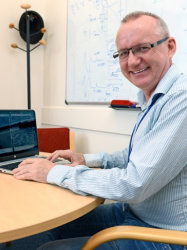BibTex format
@article{Falkenberg:2020:10.23919/CinC49843.2019.9005652,
author = {Falkenberg, M and Hickey, D and Terrill, L and Ciacci, A and Peters, NS and Christensen, K},
doi = {10.23919/CinC49843.2019.9005652},
journal = {Computing in cardiology},
pages = {1--4},
title = {Identifying potential re-entrant circuit locations from atrial fibre maps.},
url = {http://dx.doi.org/10.23919/CinC49843.2019.9005652},
volume = {46},
year = {2020}
}

